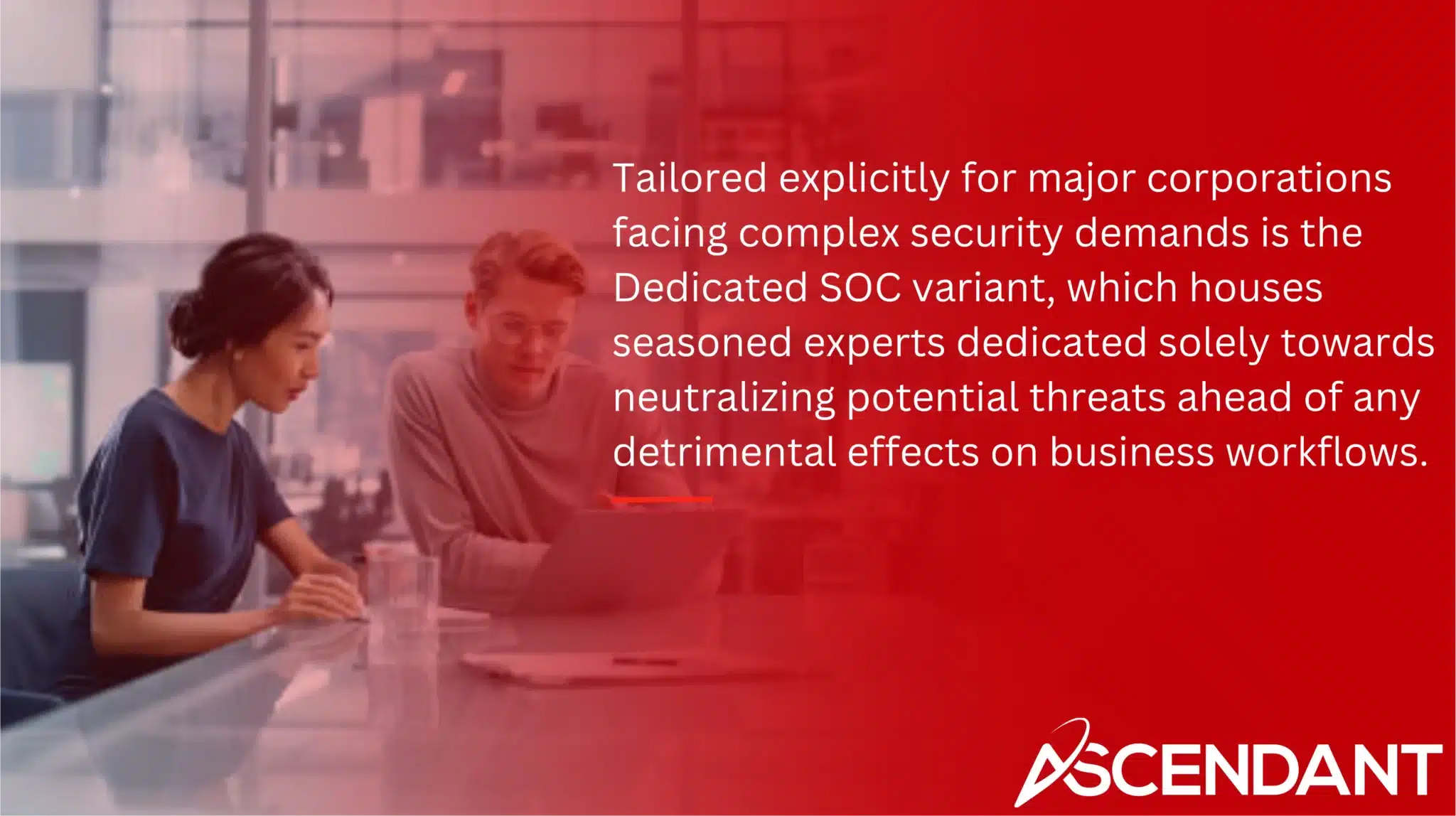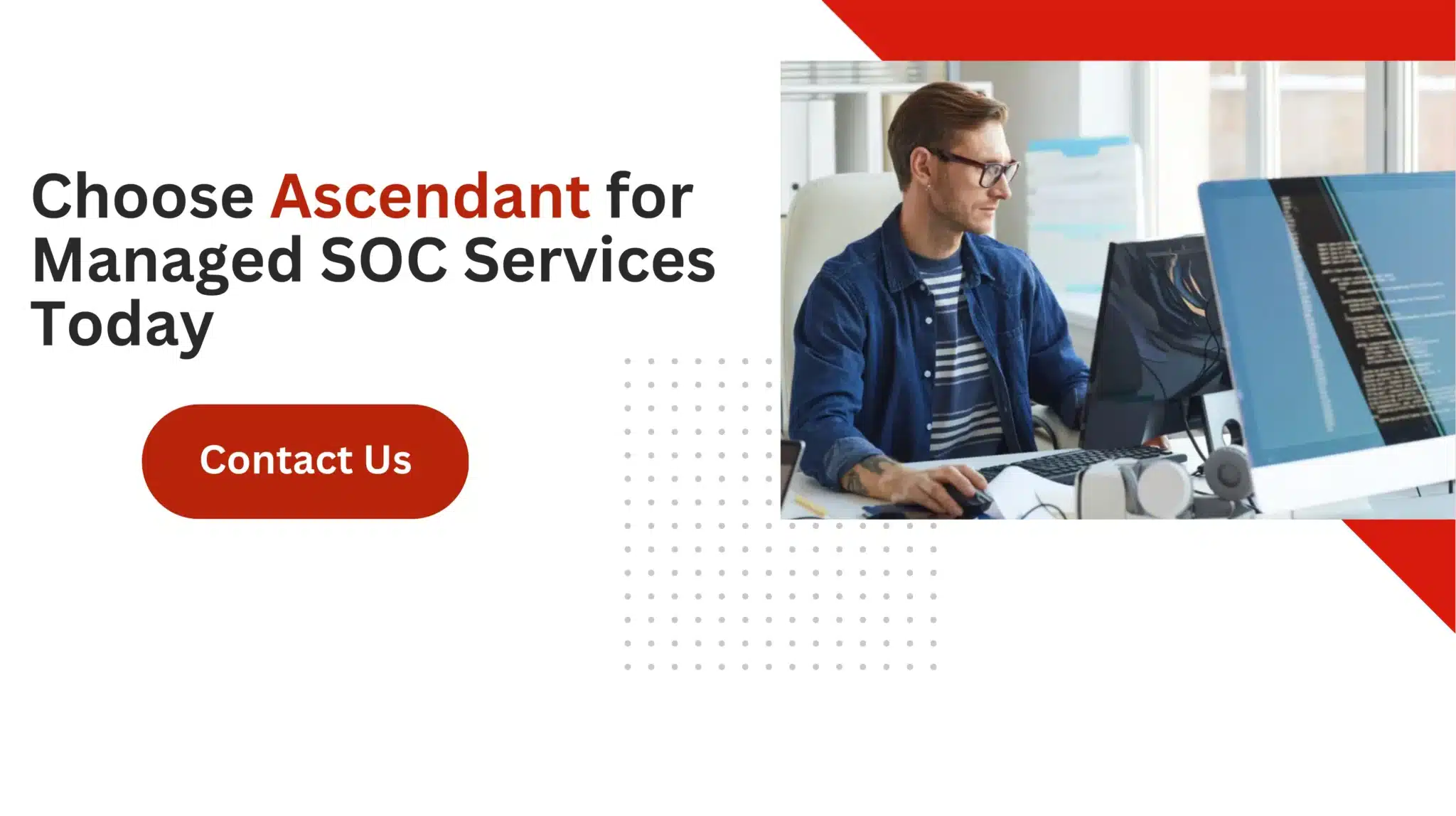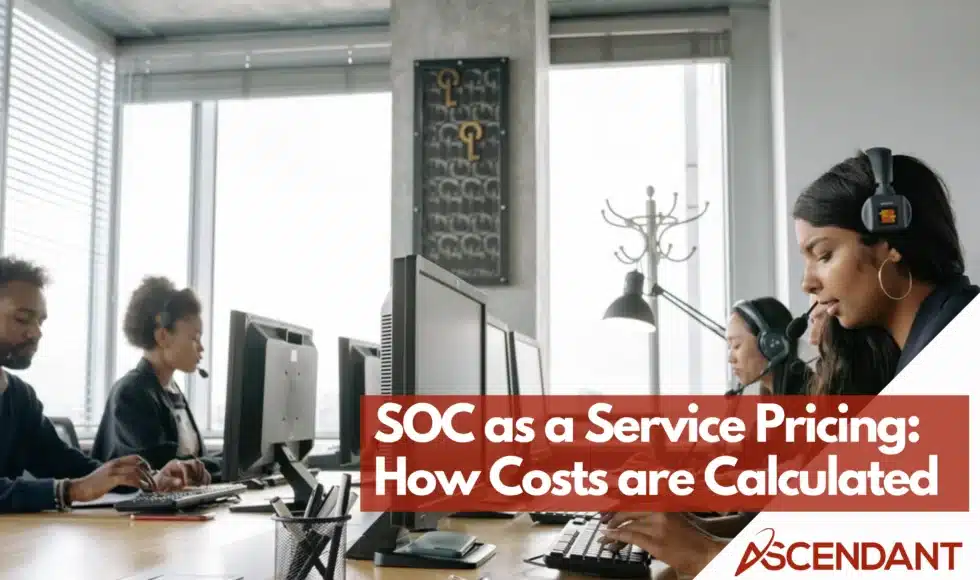SOC as a Service pricing varies based on several factors. In this guide, we’ll explain what influences the costs and help you understand what you might expect to pay.
In This Article:
- Key Factors Influencing SOC as a Service Pricing
- Different Levels of SOC as a Service
- How SOC as a Service Pricing is Calculated
- Benefits and Cost Efficiency of Managed SOC Services
- Comparing Outsourced SOC vs. Internal SOC
- Understanding Additional Costs in SOC as a Service
- Evaluating Managed SOC Service Providers
- Finding the Right SOC Service for Your Business
Key Takeaways
- SOCaaS pricing is influenced by service complexity, technology stack, compliance needs, and geographic location.
- There are three levels of SOCaaS: Entry-Level for small businesses, Standard for medium to large enterprises, and Dedicated SOC for large organizations with advanced security needs.
- Outsourcing SOC services offers cost savings, specialized expertise, and scalability compared to building an internal SOC.
Key Factors Influencing SOC as a Service Pricing
The cost of SOCaaS is influenced by the level of complexity and breadth of services provided. Services that encompass broader security surveillance and more robust incident response capabilities tend to incur higher fees. Pricing is also impacted by the variety and scale of threats and vulnerabilities that are under surveillance.
The selection of technological tools used by SOCaaS vendors significantly affects pricing as well. The implementation of cutting-edge solutions, such as AI-powered analytics and automated processes, may lead to a rise in costs while enhancing overall security measures. The location where the SOC operates plays a part in shaping prices. Regions with elevated labor costs are likely to charge more for their services.
Expenses associated with compliance requirements from regulations like GDPR or HIPAA can be incorporated into SOCaaS pricing structures. Customization demands might push prices up since they require extra resources to fulfill specific needs. Service agreements promising quicker reaction times typically correspond with an escalation in price points due mainly to increased resource dedication necessary for expedited incident response actions.
Different Levels of SOC as a Service
SOCaaS is structured into three key service models designed to accommodate the diverse security needs of organizations: Entry-Level, Standard, and Dedicated Security Operations Centers (SOCs).
At its most fundamental tier, the Entry-Level SOC delivers basic yet essential monitoring for security incidents and threat detection. Services included within this level encompass access control measures, encryption practices, performance tracking capabilities, as well as maintaining processing integrity and firewall defenses. This configuration serves small to medium enterprises optimally by addressing their limited resources in terms of a security operations center.
Moving up one notch in scope and capability is the Standard SOC model that offers an expansive suite geared toward robust threat identification, prevention tactics along with investigation protocols complemented by IT automation technology. It’s engineered for entities exhibiting moderate sophistication within their security strategy development phase while catering to escalating requirements pertinent to their business’s safety framework.

Tailored explicitly for major corporations facing complex security demands is the Dedicated SOC variant, which houses seasoned experts dedicated solely towards neutralizing potential threats ahead of any detrimental effects on business workflows. The cost-effective benefit here lies in bypassing upwards expenditures associated with setting up an internal SOCa—which can exceed $2 million—by outsourcing responsibilities at nearly half that sum around $950 thousand instead.
How SOC as a Service Pricing is Calculated
Various approaches exist for determining SOCaaS pricing. The flat-rate model is prevalent, providing a consistent monthly or annual fee that encompasses all services, which facilitates predictable budgeting.
In contrast, usage-based pricing varies according to the volume of data processed or alerts issued, offering adaptability at the risk of unpredictable expenses. Pricing models based on the count of connected devices or total users are also widely utilized in this sector.
It’s essential when selecting managed services to consider these different pricing structures thoroughly to identify an option that delivers cost efficiency. Key elements such as monitored device quantity, levels of service offered and tailored security options play substantial roles in affecting overall SOC costs.
Benefits and Cost Efficiency of Managed SOC Services
Employing managed SOC services bolsters an organization’s defensive measures significantly. By engaging with a managed security service provider, organizations benefit from the expertise of seasoned cybersecurity experts who deliver sophisticated support and swift response to ensure threats are identified and neutralized promptly when leveraging managed security services.
At the heart of managed SOC offerings is proactive threat detection. This involves relentless surveillance paired with cutting-edge threat intelligence that can pinpoint potential dangers before they escalate into actual incidents. Such preventive strategies solidify overall protection and offer financial advantages by averting expensive breaches, thus optimizing investment in security.
Managed SOC providers conduct meticulous analyses of past incidents, which feed into ongoing refinement of their clients’ defense mechanisms. Through such thorough evaluations and perpetual enhancement efforts, these providers guarantee improved handling of security events as well as fortified readiness against the ever-changing landscape of cyber threats.
Comparing Outsourced SOC vs. Internal SOC
Establishing and managing an in-house SOC involves substantial financial outlays, necessitating expenditure on both technological resources and human capital. Two main drawbacks of operating an internal SOC are its steep operational expenses and the challenge of acquiring adequate expertise.
By contrast, contracting out SOC services can provide cost efficiencies, opportunities to tap into specialized knowledge, and flexibility for expansion suited to developing enterprises. Security Operations Center as a Service (SOCaaS) diminishes overall expenditures while enabling more consistent fiscal planning when compared with running a homegrown SOC.
This juxtaposition highlights the superiority of outsourced SOC offerings for entities seeking to elevate their security stance without enduring the elevated costs or complexities tied to orchestrating an in-house equivalent.
Understanding Additional Costs in SOC as a Service
The pricing for SOC as a Service (SOCaaS) may encompass extra charges for particular services like planning for incident response, managing vulnerabilities, and advanced security tools.
Pricing is influenced by the complexity and immediacy of incidents. Those that are more complex or require immediate attention typically incur greater fees. To accurately estimate the overall expense of SOC services over an extended period, it’s crucial to account for all associated costs including personnel, tools, and any less apparent expenses tied to SOC operations.
Organizations can fulfill regulatory compliance mandates through managed SOC services which offer specialized expertise in security measures. This provides added value that extends beyond mere financial considerations.
Evaluating Managed SOC Service Providers
To select an appropriate SOCaaS provider, one must rigorously assess various factors such as the vendor’s proficiency and experience, the sophistication of their technological resources, capabilities in threat intelligence gathering, support for regulatory compliance standards, efficacy of incident response mechanisms and stipulations within their Service Level Agreements (SLAs).
While providers that employ highly skilled professionals may command higher fees due to the premium on expertise within SOCaaS pricing structures. Nevertheless, investing in services rendered by adept security experts can justify additional expenses given their effectiveness at reinforcing threat detection operations and conducting prompt incident resolution.
By diligently scrutinizing these aspects before choosing a provider, organizations are more likely to partner with a SOC service that aligns with their specific security requirements while delivering substantial value. Enhanced by cutting-edge solutions like artificial intelligence (AI) and automation technologies utilized by the provider could also amplify the overall performance of the SOC service.
Finding the Right SOC Service for Your Business
Initiating the search for an appropriate SOC service tailored to your company entails a thorough evaluation of your unique security demands, including both present abilities and prospective expansion objectives. This analysis is key in identifying which tier of SOC service best aligns with your organizational needs.
Small to medium-sized businesses that have limited resources and budgetary constraints for security might find an Entry-Level SOCaaS fitting their circumstances well. For medium to larger organizations possessing moderate levels of security maturity looking to address increasing complex requirements, Standard SOCaaS could be more appropriate. In contrast, large enterprises that exhibit high degrees of security sophistication and operate within intricate IT landscapes should consider opting for Dedicated SOCaaS.
It’s imperative when reviewing potential providers’ offerings to examine the extent they incorporate cutting-edge tools such as AI and automation into their services. Making this assessment ensures you select a provider whose operations not only harmonize with but also bolster the specific business processes and stringent security mandates within your organization.
Summary
To sum up, comprehending the pricing of SOC as a Service requires an assessment of numerous elements such as service complexity, scope, technology infrastructure, and adherence to compliance costs. Various tiers of SOC services are designed to meet differing needs across organizations. Careful scrutiny of these alternatives can result in notable advantages and economic savings. By selecting an appropriate SOC service provider, companies are poised to bolster their security posture substantially and safeguard their digital resources with efficacy.
 Frequently Asked Questions
Frequently Asked Questions
How much does a managed SOC cost?
The price of a managed SOC service ranges from $10 to $20 monthly for each asset, with variations dependent on the particular necessities and configuration of your security system.
Altering your specifications may assist in refining the cost associated with this investment.
How much does cybersecurity as a service cost?
Businesses can bolster their security affordably with cybersecurity as a service, which usually ranges from $50 to $200 monthly per user. This pricing model offers predictability, aiding in budgeting and strategic financial planning.
What does SOC as a service mean?
A cybersecurity provider manages a complete security operations center for businesses through SOC as a Service, enabling them to improve their security posture without the burden of sustaining an internal team.
For organizations aiming to strengthen their cybersecurity capabilities, this service is an efficient option.
What does SOC mean cost?
Share of Cost, abbreviated as SOC, denotes the part of expenses for which an individual is accountable in various financial scenarios.
It’s vital to grasp this concept to handle one’s financial responsibilities with proficiency.
What are the primary factors influencing SOC as a Service pricing?
The primary factors influencing SOC as a Service pricing include the complexity and scope of services, the technology stack used, geographic location, compliance costs, customization requirements, and service agreements.
Understanding these elements will help you assess the overall costs effectively.

